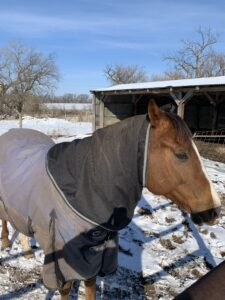How Running a Farm and IT Disaster Planning are Alike
| I started working in IT 41 years ago, and while what I do has changed dramatically over the years, I still enjoy it, especially the people that I work with and would do it all over again in a heartbeat.
A few years ago, my wife and I were given a new set of responsibilities as we took over management of the family farm. This has been challenging work but we both love it. It may not seem like it on the surface, but I have found that there are a number of parallels between running the farm and IT planning, especially when a cold front like what we have experienced lately in the Midwest comes around. |
 |
The bitter cold combined with strong winds is no fun to work in and is dangerous to all life. Waiting until something like that happens to respond to it is bad planning and sets yourself up for failure. All livestock need special care as does most of the equipment that you will need to depend upon.
 |
The basics of ensuring that livestock had shelter, food and water were in place. We spent time making sure the fencing was secure and that equipment such as the tractor were all ready to go. We planned as much as we could and then waited.
This last week when the temperatures dropped well below zero, we found a couple of surprises waiting for us. A large stock tank had to be kept free of ice and I had a heater installed and thought we were prepared. This should have done the trick but the electrical service to it gave out. Why? Who knows? I’m guessing that the ground contracting put stress on the wire – we’ll have to wait for warmer weather to figure that out. In the meantime, we had to find a new way to provide water for the horses. We were able to get a smaller tank in their stall area and put a floating heater in it. That means filling it manually and frequently, but at least they have what they need.
|
|
The more I thought about water, it got me wondering about the main well itself and what might go wrong there. It is in a below ground cavity about five feet deep, and while insulated on top, it might not be good enough for temps that got into the negative teens. If we lost the well pump it would mean no water for any of the livestock, or humans for that matter. If it froze and broke the lines, it would be a frigid mess to repair and I had no desire to be involved with that. To prepare for this potentiality, I put a small wattage electric heater in the well cavity so that it would stay above freezing and thankfully, we avoided that situation.
|
 |
 |
There are many things to consider for the horses and cattle and what they need to be able to make it. Do they have food, water and shelter? Are any ready to calf? Murphey’s law implies that the calves will come when the weather is the worst, and those little ones won’t be able to make it in this cold. My Father-in-Law always said that sheep don’t need a reason to die but bitter cold will for sure accomplish the task.
Even with all of the preparation that has been done, we still need to monitor what’s going on. Things can change quickly, and we need to know it right away so we can do something about it. A tree limb falling from the wind and weight of snow is not a big deal but if it falls on a fence, it suddenly becomes a disaster as cattle could now get out and onto the road.
Each of us has our own methods of planning and mine has always been to spend a lot of time thinking about what might possibly happen. Plan for the worst and hope for the best as they say. I also do a lot of reading and find that thoughts from other people help me expand my ideas on what to expect for areas that are new to me. |
Since we started Dataedge just over 20 years ago, we have always focused on disaster planning and finding ways to help keep our client’s businesses going through tough events. Our approach has been to build resiliency and security into all layers of the infrastructure and to mesh them with the business processes wherever possible.
We spend time thinking about not only what could go wrong, but about growth and unexpected changes, such as acquisitions that would affect the foundational architecture. Budgets are always a concern, but we work hard to find the perfect design for the specific needs of each client.
We find that people are often overlooked in any planning process. Many business leaders assume a few people might not be able to show up for work, but are sure that most will be able to. In our experience, we have found this not to always be true. People need to look after their families in a disaster and we should put procedures into place to help them when they are in that situation. We have to look out for what is truly our most important asset.
If you’ve been around IT long enough, you’ve seen data lost. I have to say that one of the worst feelings you can ever have professionally is to realize that data has been lost and can’t be recovered. It’s visceral and instantly turns into a feeling of nausea. At that point all you can do is try to figure out how to recover, but how much better it would have been if you had the tools and structures in place to quickly get the data back.
Even with the proper design, we need to be able to monitor the environment and respond quickly. In today’s world, a cyber-attack is not a question of “if” but “when”. We have to be able to detect it as quickly as possible and respond in a way that protects and eradicates the breach.
IT, like farming and ranching, is not glamorous nor it is filled with celebrities like some other professions, but it is critical, because without it, businesses can suddenly come to a halt and even completely fail. People depend upon us to prepare and then handle the situation when bad things happen. They breathe a great sigh of relief when we can tell them that we’ve got it covered. Everything is going to be just fine.
Farming, Ranching and IT can all be made more successful by planning, anticipating the risks and figuring out how to mitigate them. It’s what we do at Dataedge and we can do it for you.
Tim Hollingshead
Dataedge Solutions
www.dataedge.com
Contact us at sales@dataedge.com now to start a conversation.




